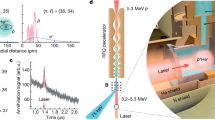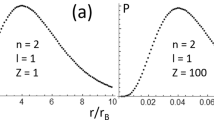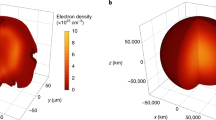Abstract
PREVIOUS experiments by one of us (NATURE, vol. xcii., p. 5; Phil. Mag., vol. xxix., pp. 284—297, 1915) have shown that the 4686 line could be obtained by passing a condenser discharge through pure helium, and it was concluded that the results supported a theory put forward by Dr. Bohr (Phil Mag., vol. xxvi., p. 1, 1913). This theory, which was deduced by applying the quantum hypothesis to Sir Ernest Rutherford's atom-model, ascribed the line to helium. On the other hand, Rydberg, assuming the Pickering lines to constitute the sharp series of hydrogen from analogy with the spectra of the alkali metals, obtained by calculation the value 4687.88 for the wave-length of the first line of the principal series of hydrogen.
This is a preview of subscription content, access via your institution
Access options
Subscribe to this journal
Receive 51 print issues and online access
$199.00 per year
only $3.90 per issue
Buy this article
- Purchase on Springer Link
- Instant access to full article PDF
Prices may be subject to local taxes which are calculated during checkout
Similar content being viewed by others
Author information
Authors and Affiliations
Rights and permissions
About this article
Cite this article
EVANS, E., CROXSON, C. The Structure of the Line of Wave-Length 4686 A.U.. Nature 97, 56–57 (1916). https://doi.org/10.1038/097056b0
Issue Date:
DOI: https://doi.org/10.1038/097056b0
Comments
By submitting a comment you agree to abide by our Terms and Community Guidelines. If you find something abusive or that does not comply with our terms or guidelines please flag it as inappropriate.



